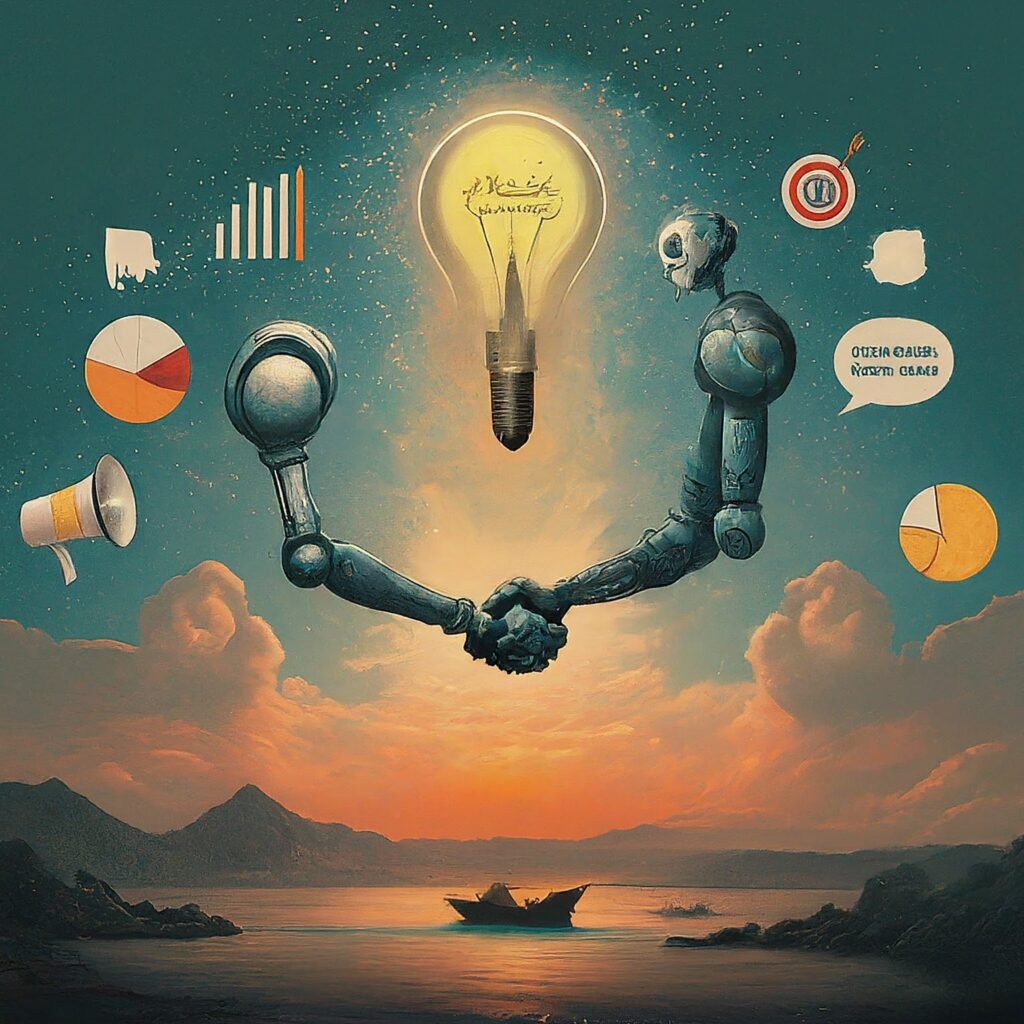The Disruptive Power of Generative AI
Marketing has seen transformative changes over the past decades, the most significant being the shift to digital consumer journeys in the early 2000s. This digital revolution brought about the rise of digital natives who quickly adapted and dominated the market, leaving those who lagged behind in the dust. Now, we are witnessing another monumental shift driven by generative AI (GenAI), poised to redefine the landscape of marketing once again.
Accelerated Creativity and Production
Generative AI is revolutionizing the way creativity and production are approached in marketing. Traditional marketing campaigns often took months to conceptualize and produce. With GenAI, this timeline can be condensed into mere minutes. This acceleration is possible because AI can automate the creation of marketing materials at unprecedented speed and scale. However, this doesn’t mean that original, human-driven creativity is obsolete. Instead, we now have two speeds of creativity: automated production for rapid deployment and deep, innovative ideas that still require human ingenuity.
Hyper-Personalized Consumer Journeys

One of the most significant impacts of GenAI is its ability to hyper-personalize consumer journeys at scale. By processing vast amounts of market insights and consumer data, AI can create highly tailored marketing messages that resonate on an individual level. This level of personalization was previously unattainable, limited by the constraints of traditional data processing and analysis.
Accelerating Innovation
The integration of GenAI into marketing practices doesn’t just enhance current strategies; it propels innovation. GenAI models can analyze market trends, predict consumer behavior, and generate insights that drive new marketing tactics. This ability to swiftly adapt and innovate is crucial in a rapidly evolving digital landscape.
Steps for Marketers to Harness GenAI
With the rapid advancements in GenAI, marketers are often left wondering, “Am I already behind?” The answer lies in proactive engagement with the technology. Here are three key steps marketers can take to harness the power of GenAI:
1. Experimentation:
- Launch pilots: Test GenAI tools in various aspects of marketing. For instance, implement a GenAI-powered chatbot on your website to enhance customer interaction, or use AI to create personalized and interactive content.
- Explore competitive advantages: Understand how GenAI can offer unique benefits to your brand, such as faster production times and more personalized consumer engagement.
2. Data Transformation:
- Organize and package data: Begin by curating your unique data and content. This preparation is crucial for training future GenAI models tailored specifically to your brand’s needs.
- Leverage insights: Use these models to gain deeper insights into consumer behavior and market trends, enabling more informed decision-making.
3. Sharpen Brand Identity:
- Train algorithms with brand essence: Ensure that your AI tools capture the distinctive elements of your brand. This helps maintain a consistent and authentic brand voice across all AI-generated content.
- Avoid homogenization: Relying too heavily on GenAI without maintaining brand uniqueness can lead to a homogenized market where all brands sound alike. Maintaining a unique brand voice is essential to stand out and keep consumers engaged.
The Imperative of Starting Now
The future of marketing is being shaped by the capabilities of generative AI today. Companies that begin their GenAI journey now are positioning themselves to lead in this new era of marketing. By experimenting with AI tools, transforming data processes, and sharpening brand identity, marketers can not only keep pace with the rapid advancements but also gain a competitive edge.
The message is clear: the future of marketing starts now, and it belongs to those who are willing to embrace and adapt to the transformative power of generative AI.